Sports
Many Tennesseans enjoyed watching sports during this time. College football became extremely popular. As early as 1886 Vanderbilt University had a football team, followed by Sewanee University in 1890, the University of Tennessee in 1891, and Fisk University in 1893.
Between 1899 and 1904 Fisk University only lost one game and by 1929 had won the Southern Football Championship eight times. However, these universities and their teams were racially segregated.
Rivalries developed between colleges. By the mid-1920s Vanderbilt University and the University of Tennessee had developed such a relationship. An estimated 25,000 fans attended the title football game for the Southern Conference between the two undefeated teams in 1929. It was also officially broadcast over the WMC radio station. Tennessee won 13-0.
Newspapers -cover-ed all the games and described the details to their readers in sometimes colorful and descriptive language. Writers described Tennessee Coach Bob Neyland and Vanderbilt
Coach Daniel McGugin as generals preparing their soldiers for battle. Headlines screamed such slogans as “Vandy Completely Outplayed Before 25,000.”
One of the most famous sportswriters in the country’s history was Tennessean Grantland Rice . Born in Murfreesboro, Rice attended Vanderbilt University where he played football and baseball. Following his love of sports, he became a sports writer for the Nashville Daily News and later for the Nashville Tennessean newspapers.
He also worked for newspapers in other parts of the country. Rice is credited with naming the Notre Dame backfield in 1924 the “Four Horsemen.” Using the Biblical reference to the Four Horsemen of the Apocalypse, Grant wrote a poetic entry about the four football players. The passage became famous and is still known today among football fans.
Outlined against a blue-gray October day the Four Horsemen rode again. In dramatic lore they are known as famine, pestilence, destruction and death. These are only aliases. Their real names are: Stuhldreher, Miller, Crowley and Layden.
Rice is also famous for another popular saying that is still used today: “…He marks—not that you won or lost—but how you played the game.”
Baseball teams
Baseball became very popular at the turn of the century. Semi-professional baseball teams were sponsored by cities or businesses. In 1894 Knoxville’s first professional team, the Knox Reds or Indians, began playing at Baldwin Park. Chattanooga was home to the Roanes (named after the Roane Iron Fence Company).
Memphis had its first professional team, the Red Stockings, in 1877. Over the next few decades, the city sponsored many baseball teams, naming them the Blues, the Riverdales, the Grays, the Giants, and the Fever Germs.
Nashville sponsored the Americans at Sulphur Spring Bottom during the early 1880s. The team changed its name several times, ending up as the Volunteers. They won the pennant (championship) in 1901, 1902, 1908, and 1916.
Although not allowed to participate in white baseball leagues, African Americans formed separate clubs and thus also enjoyed the popular sport. In 1886 Memphis had an African American team named the Eurekas; later the team was named the Red Sox. In Nashville, African Americans could watch the Elite Giants.
In 1922, R. S. Lewis built a wooden stadium for the Memphis African American team at Lewis Park, which became a source of pride within the community for decades. Other cities also sponsored such teams as Chattanooga’s Black Lookouts, and Knoxville’s Black Giants. The Giants were famous for their one armed pitcher, Wing Maddox.
Picture Credits:
- Photograph of a female baseball player. This photograph was taken in 1916 in Maryville, Tennessee. It shows Iren Wright in a Maryville College baseball uniform. Blount County Public Library.
- Photograph of a McCallie School football player. This photo was taken sometime between 1915-1919 in Chattanooga. It shows a football player catching the ball. Chattanooga-Hamilton County Bicentennial Library.
- Photograph of the Cumberland University football team. This photo was taken in 1924 in Lebanon, Tennessee. It shows eleven uniformed players in line up positions on the football field. Tennessee State Library and Archives.
- Photograph of the Lambuth College Men’s Basketball Team. This photo was taken in Jackson, Tennessee in 1924. It shows seven Lambuth College basketball players in uniform along with their coach standing on the steps of a college building. Lambuth University.
- Photograph showing a Cumberland University baseball game. This photo was taken in 1895 in Lebanon, Tennessee. It shows a college baseball game being played and watched by numerous spectators. Tennessee State Library and Archives.
- Photograph of a female basketball player. This photo was taken in Nashville. It shows Kathleen Bradain, a basketball player of an unknown team, holding a basketball. Tennessee State Library and Archives
- Photograph of the Minton Grays baseball team. This photo was taken in 1909 in Jackson, Tennessee. It shows Coach A. B. Minton and eleven players in uniform. A. B. Minton was also the master mechanic for Mobile and Ohio Railroad in Jackson, Tennessee. Jackson-Madison County Library.
- Photograph showing the Hiwassee College Women’s basketball team. This photo was taken in 1900 in Madisonville, Monroe County, Tennessee. It shows seven players in uniform. The group is shown posing with a basketball and school pendent outside of a building. Cleveland Public Library.
- Photograph showing a football game. It features a football player catching a ball while another player is about to tackle him. A referee and another football player are also shown. Middle Tennessee State University.
- A photograph of (l-r) Jackie Mitchell, Babe Ruth, and Lou Gehrig at an April 2, 1931 exhibition game between the New York Yankees and the Chattanooga Lookouts. Jackie Mitchell was a 17-year-old woman from Memphis who was drafted by the Lookouts. In front of 4,000 fans, Mitchell struck out both Ruth and Gehrig. She was famously known as “The Girl Who Struck Out Babe Ruth,” receiving fan mail from across the country. Retiring from baseball at age 23, she lived in Chattanooga until her death in 1987.
- Photograph of Coach Robert Reese Neyland. This photo was taken in 1942. It shows Neyland on a football field. Two players can be seen in the background. Tennessee State Museum Collection, 1998.63.3
- Photograph of Coach Daniel Earle McGugin. It shows McGugin in football gear. Ringgold County Genweb Project.
- Pop-up photograph of Grantland Rice, date unknown. Courtesy of Photographic Archives, Vanderbilt University
Confronting the Modern Era >> Life in Tennessee >> Having Fun >> Sports
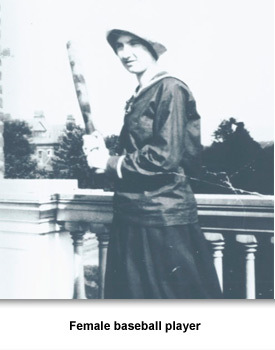
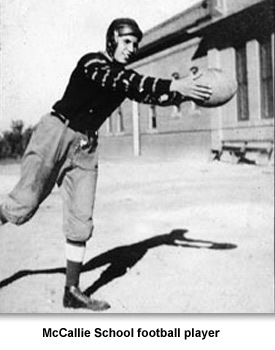
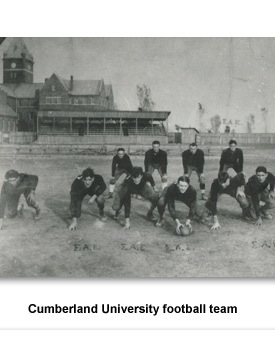
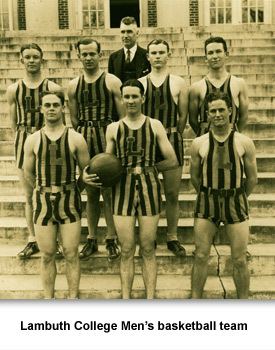
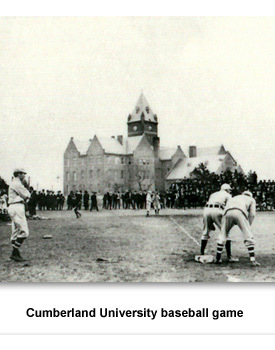
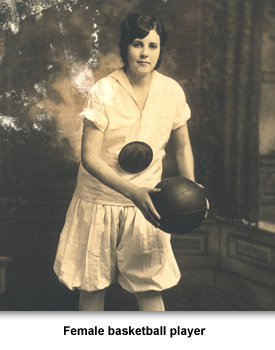
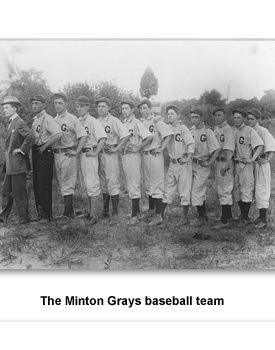
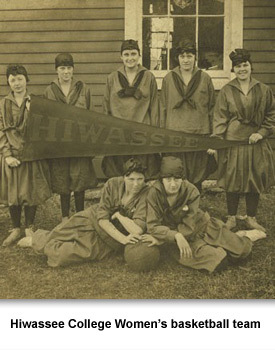
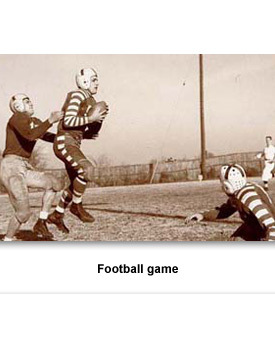
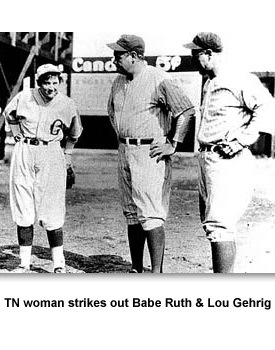
 Sponsored by: National Endowment for the Humanities
Sponsored by: National Endowment for the Humanities